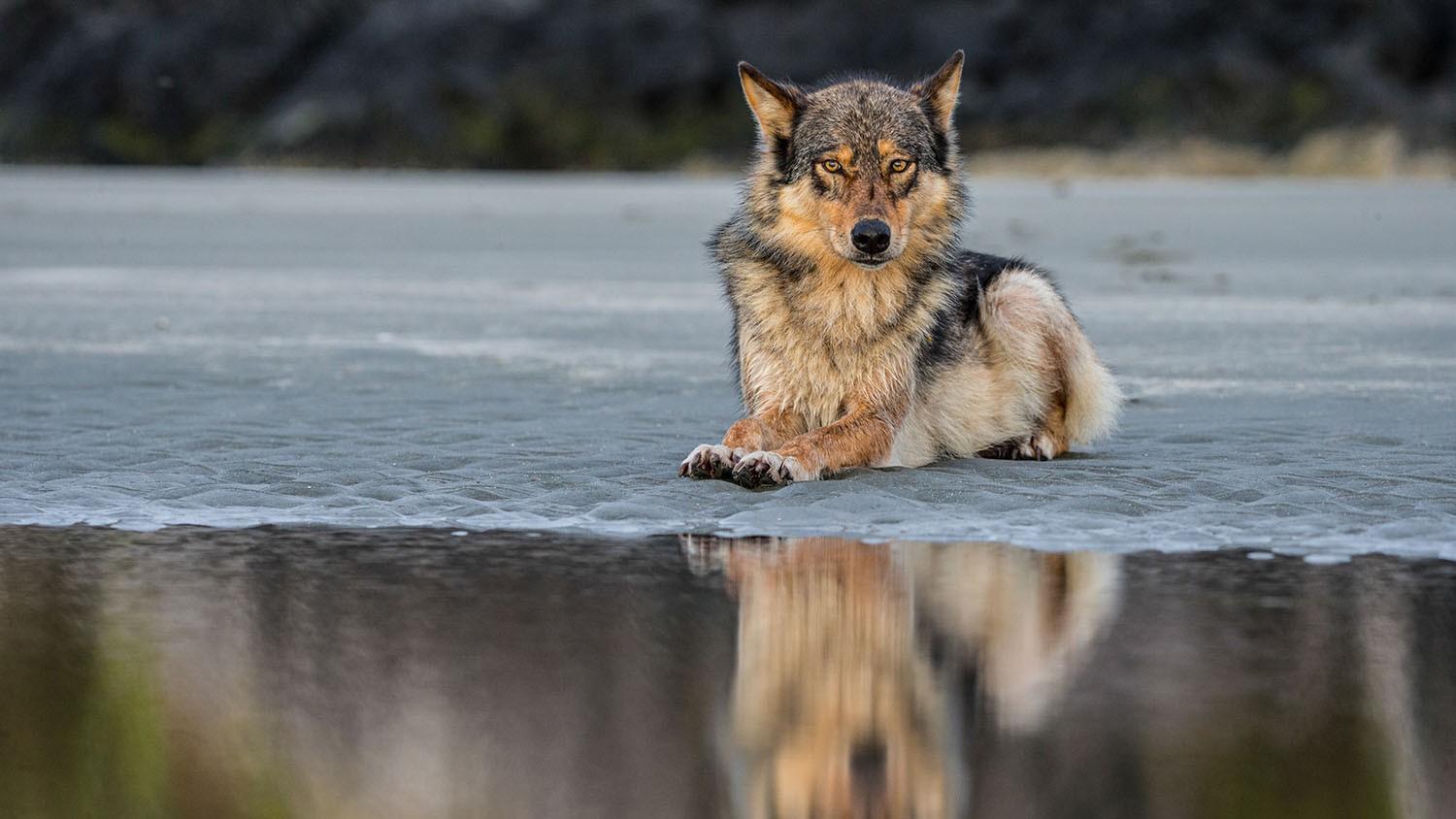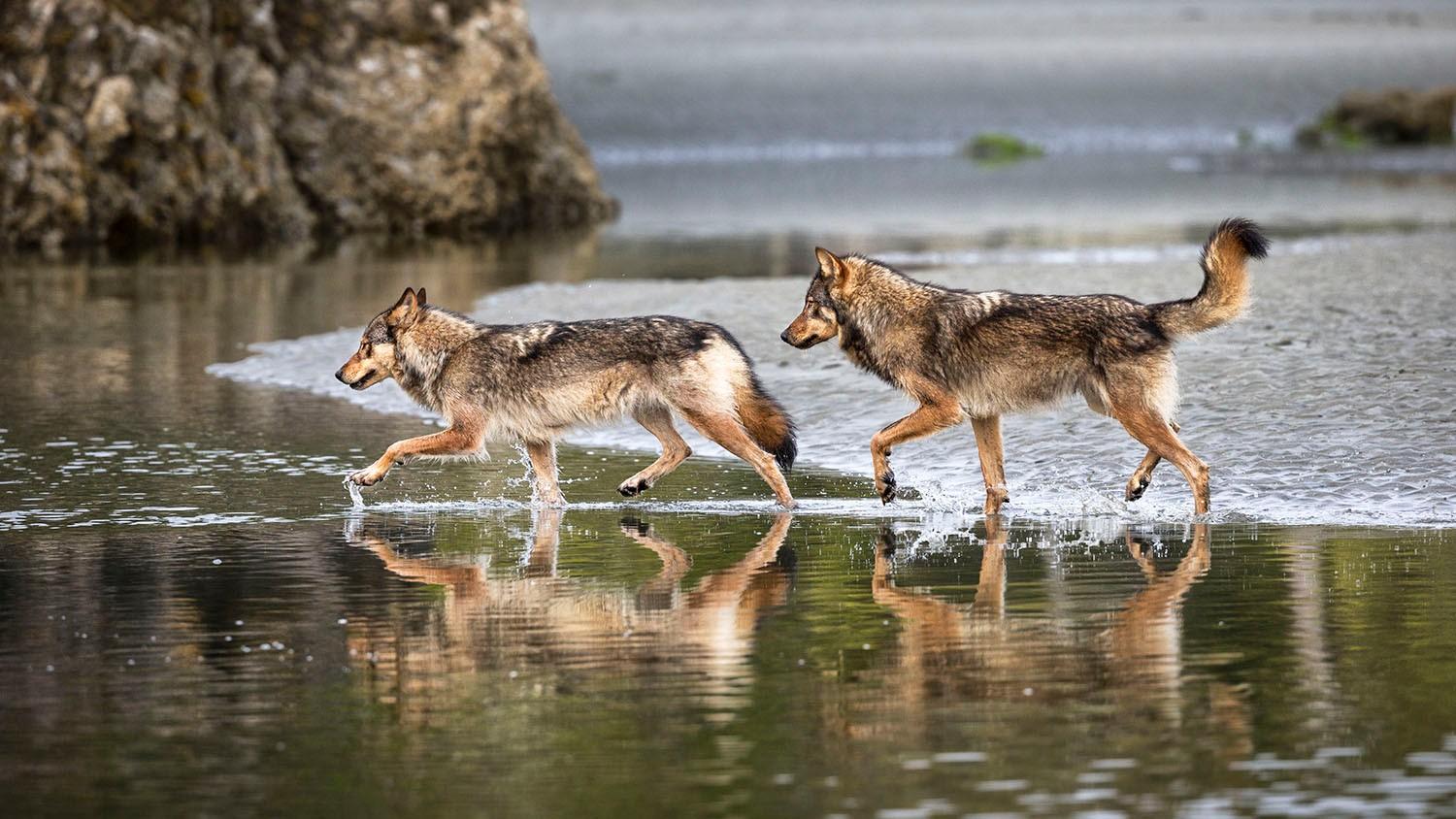On the Pacific Coast beaches of Canada’s British Columbia province, there are packs of wolves that roam the coastline, eating fish and other seafood.
“You notice as soon as you see them that they are an evolutionarily distinct species,” said wildlife photographer Paul Nicklen, whose Instagram feed is filled with striking photographs of the scrappy, coastal wolves. “These animals are swimming sometimes 5 miles offshore to be able to access a sea otter or a seal. They forage on the beaches.”
British Columbia’s coastal wolves — also known as sea wolves — had been threatened by trophy hunters until conservation groups stepped in.
Nicklen has dedicated much of his time to capturing the beauty of these animals, and recently, he has used the images to raise money for their protection.

With the help of Nicklen’s organization SeaLegacy, the environmental group Raincoast Conservation Foundation was able to raise more than $500,000 to buy up the commercial hunting licenses in the area to prevent nonlocals from traveling to British Columbia to hunt the wolves and other wildlife.
“Acquiring the commercial hunting rights … will protect the area’s stunning variety and abundance of wildlife, ranging from mountain goats, to grizzly bears, black bears, wolves, cougars, and wolverines,” said Brian Falconer, in a press release from the Raincoast Conservation Foundation.
Nicklen believes that by sharing photos of the wolves, he can help people emotionally connect with animals that they might never see in person, and connect people to the cause of ocean conservation.
“Our footage shows these animals playing and rolling around and romping and chasing and surviving off the sea,” Nicklen said. “It just sort of injects your heart with a whole bunch of emotion. We love the things that we can see.”
To take photos of these wolves, Nicklen and his team would wait days, sometimes weeks, on the beaches — patiently watching the wolves come out to forage.
Nicklen said a lot of people assume that it’s boring to sit and wait for wolves, with no assurance they’ll come out. But, for him, it’s the opposite.
“As a wildlife filmmaker, when you spend that amount of time sitting out there, all your other senses start to open up, and you essentially yourself go into a sort of meditative state,” Nicklen said about the experience.
“When it finally happens, you sort of have to pinch yourself. All of a sudden, there’s a pack of 16 wolves in front of you and they’re howling and running and playing up and down the beach because they’ve decided to accept you. It’s a very powerful experience.”
Our coverage reaches millions each week, but only a small fraction of listeners contribute to sustain our program. We still need 224 more people to donate $100 or $10/monthly to unlock our $67,000 match. Will you help us get there today?
